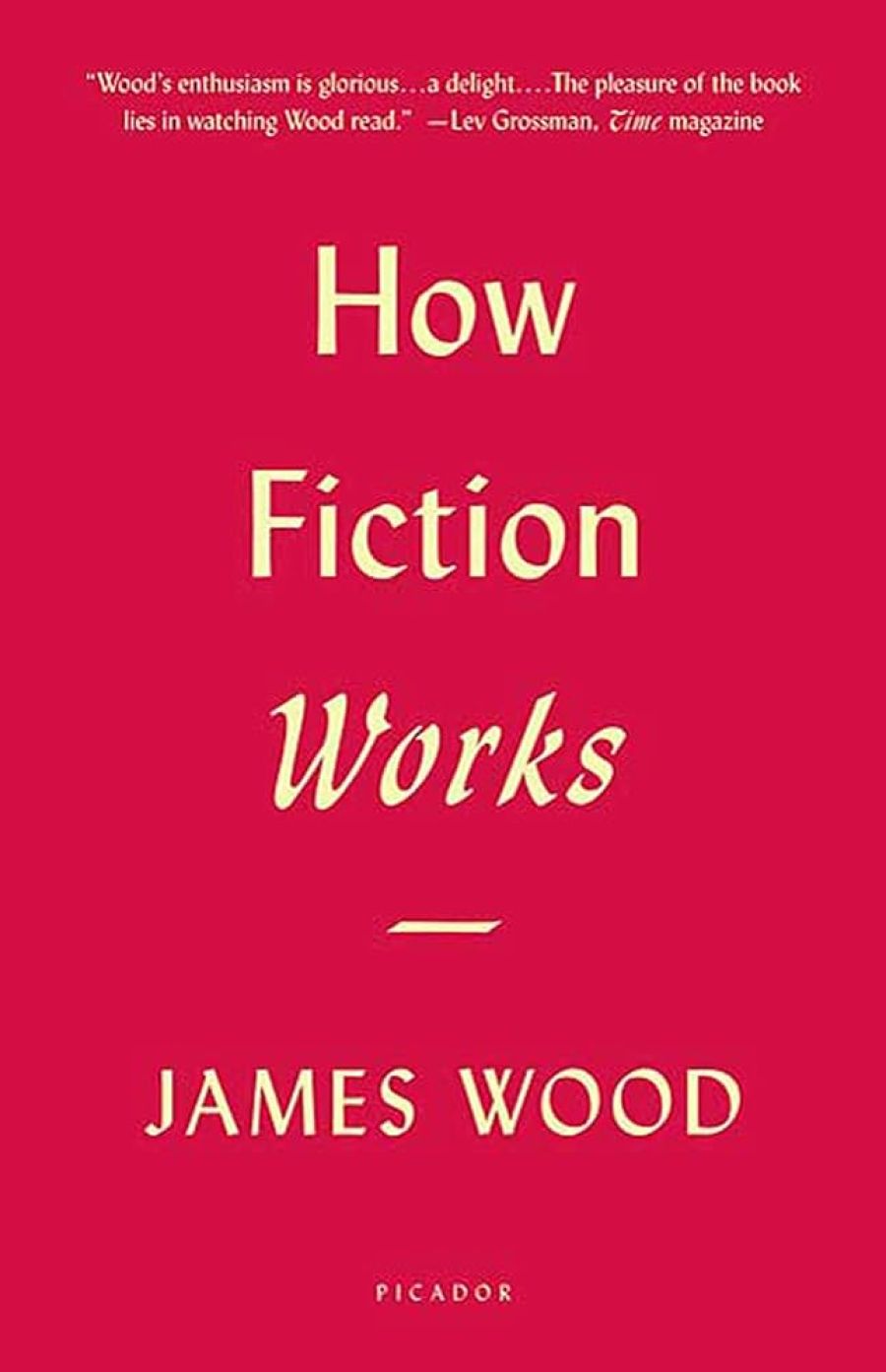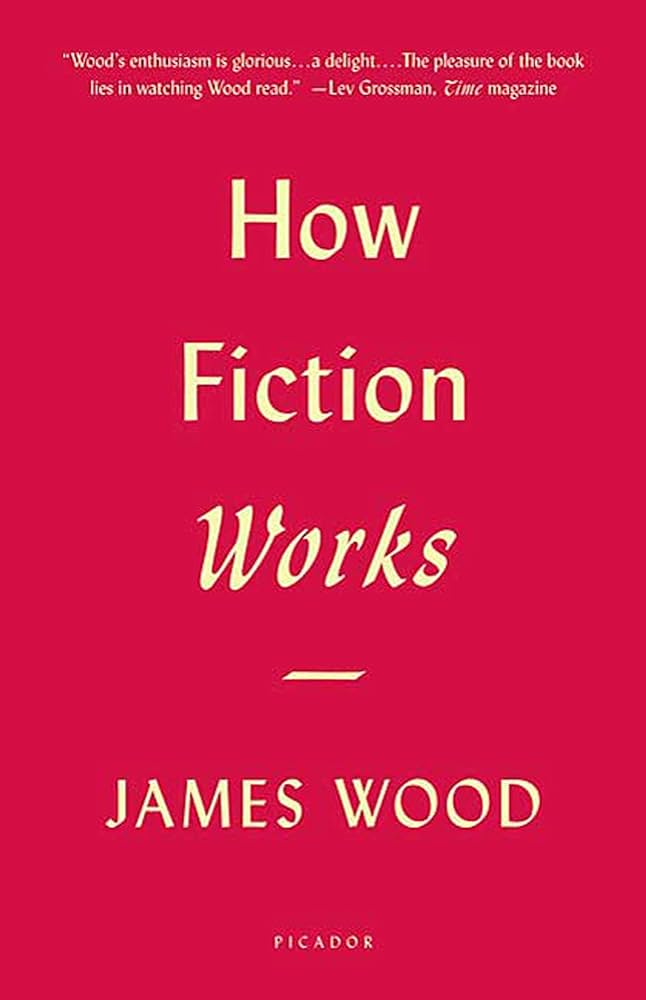
- Free Article: No
- Contents Category: Literary Studies
- Review Article: Yes
- Article Title: ‘The nearest thing to life’
- Online Only: No
- Custom Highlight Text:
When E.M. Forster published Aspects of the Novel in 1927, he was not writing as a critic, and the success of the book is due to precisely that. Forster gives us the intuitive judgements of a novelist – a series of rough observations full of verve. James Wood’s How Fiction Works is indebted to Forster’s study and turns on like questions (what constitutes a convincing character? How does narrative style shape a novel? What defines a telling detail?). But while he poses theoretical questions, Wood does not offer theoretical answers. And unlike Milan Kundera in The Art of the Novel (1985), Wood is not interested in the way writers gloss their own creations.
- Book 1 Title: How Fiction Works
- Book 1 Biblio: Jonathan Cape, $59.95 hb, 194 pp, $39.95 pb
- Book 1 Cover Small (400 x 600):

- Book 1 Cover (800 x 1200):

Instead, Wood’s aim, bordering the territory of Forster, is to ask ‘a critic’s questions and offer a writer’s answers’. This claim, coupled with the utilitarian-sounding title, risks making the book sound like a manual. And yes, it is a book that is interested in the mechanics of the novel. Because of this, it can read like a primer for a Creative Writing course. But this interest in technique is part of a broader argument in which Wood wants to suggest that fiction is ‘both artifice and verisimilitude’. The novel, he claims, presents itself as an instance of fakery – fiction is merely make-believe – whilst at the same time it seeks to give an impression of truth. In exploring the question of how fiction works, Wood sets out to consider the ‘technique’ of this novelistic ‘artifice’. How, Wood asks, does the success of fiction depend upon its relation to the real? While admiring Roland Barthes, Wood nonetheless opposes him, defending realism against the charge that it is predictable, politically conservative and aesthetically conventional; a mode of description that is incapable of referring to reality.
Realism may be an effect, as Barthes claims, but for Wood this does not prevent it from being true. More importantly, Wood argues, realism is a ‘central impulse in fiction making’. Less a representational convention than a mode of attention, realism is a ‘truthfulness to the way things are’, encompassing Samuel Beckett’s Endgame (1958) as much as Charles Dickens’s Bleak House (1852–53). More than simply ‘lifelikeness’, realism – not so much a style as an aesthetic philosophy – is ‘lifeness’: life intensified or ‘brought to a different life’ by artistry. Taking his cue from George Eliot, Wood acknowledges that ‘art is not life’ and will always be artifice, but it is also ‘the nearest thing to life’. Realism, in this sense, is what makes fiction work – it being the means by which fiction refers to (rather than abnegates) reality.
In exploring this issue, Wood pays constant homage to Gustave Flaubert: so much so that the title of the book could be How Fiction Works after Flaubert. Those attributes that we consider fundamental to the novel, and upon which we judge good prose (visual detail, unsentimental and selective noticings, direct access to the thoughts of characters) were first given to us, Wood argues, by Flaubert; the ‘real founder of modern fictional narrative’.
It is thus with Flaubert as his regal guide that Wood sets out to answer ‘some of the essential questions about the art of fiction’. One of the most impressive stops on this eloquent tour concerns the post-Flaubertian commitment to detail. Flaubert is a master of the significantly insignificant detail; his visual noticings succeed on the grounds that they appear alive and not simply real. Such ‘living’ detail, Wood argues, is created through temporal counterpoint, where the noticing of a singular or instantaneous activity (a woman yawning) sits flush against an ongoing activity (washing drying on the line). Their randomness disguised, Flaubert’s details operate according to ‘different time signatures’, yet they are presented as though they occur simultaneously – the eye witnessing ‘in one visual gulp … sensations and occurrences that must be happening at different speeds and at different times’. Animated by a temporal noise, Flaubert’s visual footholds entrust fiction with the ‘unique project’ of managing temporality.
In Wood’s opinion, Flaubert’s visual legacy is a ‘mixed blessing’ for modern writers who risk making a fetish of such detail. The self-conscious exaggeration of the eye in Vladimir Nabokov, for instance, renders his fiction ‘propaganda on behalf of good noticing’. David Foster Wallace and John Updike emerge out of this same Flaubertian tradition, where ‘ideal writing’ is constituted by a ‘procession of strung details, a necklace of noticings’ that may obstruct rather than enable seeing.
A more pronounced tension emerges when an author’s style and perceptions must accommodate that of their characters. How does a stylist avoid writing over, and subsequently falsifying, their characters? It is a tension, Wood argues, best solved through free indirect style; a narrative mode that allows the author to ‘merge’ with rather than dominate the inner voice of the character.
Narrative point of view is here directly connected to the creation of convincing characters. Through free indirect style – the forerunner to stream of consciousness – we periodically inhabit the mind of the character. But this is not all that vitalises a character. While we come to know a character by the way they speak to themselves as much as by how they speak to others, this observation goes only a small way in answering Wood’s question, ‘What makes a character real?’
One of the more interesting aspects of Wood’s discussion of character is his squabble with Forster. Defending the flat character against the round, Wood argues that a character’s flatness – their dependence on a single attribute – is not to be derided. Flat characters may continue to move us, which makes them interesting and no longer the simple beings that Forster makes out. Flatness, of the Mrs Micawber variety, becomes a life-giving theatrical attribute that dramatises, rather then inhibits, the truth of the self.
Other ingredients in the making of fiction include the character’s development of consciousness. Don Quixote does not think to himself but speaks to Sancho Panza. By contrast, the modern character internalises the soliloquy and can approximate the stuttering and elliptical patterns of mental speech. The character is altered by this development. No longer bound to ‘voice their motive’, the reader becomes the analyst of the character’s unarticulated intentions. Speaking aloud is not high on the list of Wood’s priorities. Dialogue might be an element of fiction, but it is not needed to make fiction work – much can be communicated with no speech at all.
What cannot be overlooked are the workings of language. In Wood’s analysis, fiction succeeds insofar as its prose succeeds, and well-written prose can be achieved only if we ‘read musically’. Novelists and readers alike must test the ‘rhythm of sentence’, listening out for ‘echoes’, ‘patterns’, ‘historical associations’. Forster’s concerns with rhythm reverberate in this discussion, but Wood is interested in the Flaubertian stylistic shadow: in what ways has the ‘music’ of modern novelists been shaped by Flaubert’s labour?
On the one hand, Wood suggests, there is Ernest Hemingway’s self-conscious ‘minimalist richness’, on the other John Updike’s lavish manner. Wood tries to tune us in to these inheritances, directing us to listen to Saul Bellow’s rough lyricism, the repetitions of D.H. Lawrence, the compression in a sentence by Virginia Woolf. Acoustics aside, another stamp of stylistic achievement is the success of metaphor. More than poetically sufficient, the striking metaphor (Pnin’s ‘leggy thing’ of a nutcracker, Thomas Hardy’s ‘clucking’ milk) is one that is appropriate to the character; although produced by the author it also appears to ‘emanate from that character’s world’.
Wood’s genius as a critic is due to his own brilliance of style. A most lyric commentator, his best observations can strike us with the same force he attributes to novelistic detail. Although his glib endorsements can sometimes irritate (‘how fine that is’) there is also something refreshing – reminiscent of both Forster and Henry James – in praising fiction on the basis of it being interesting (James) or simply liking it (Forster). Wood is concerned with fiction’s capacity to move us: this is its moral charge, and the ultimate measure of its success or failure. In drawing our attention to the dynamic minutiae on which fiction subsists, Wood’s most impressive readings do not simply help us to see what is there, but make us feel it more deeply. If fiction’s value rests in its ability to make us greater noticers of life, Wood’s achievement is in making us greater noticers of fiction.


Comments powered by CComment